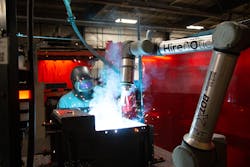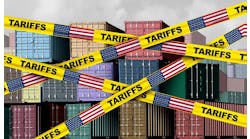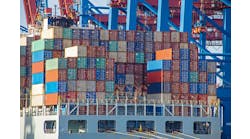Tax deductions for industrial automation are an important benefit that most controls engineers don’t consider, but they can figure prominently in cost justification, as long as the assets are delivered and placed in service in time to meet the requirements.
The supply-chain backlog could be affecting companies’ ability to claim the Section 179 deduction on new equipment, as an example. “The buyer of the tangible personal property needs to place the asset in service during the tax year in order for it to be eligible for the Section 179 deduction,” says Bryan Powrozek, senior manager, Clayton & McKervey. “As a result, the backlog in supply chain could prevent some taxpayers who would otherwise be eligible to take the deduction from taking it in the current year if the assets are not received in time.”
Most industrial equipment used in a trade or business would qualify for Section 179 treatment, explains Powrozek. “The deduction applies to most new and used tangible property used in a business and is subject to depreciation,” he says. “Certain off-the-shelf software also may potentially qualify.”
Facing low unemployment figures, manufacturers are struggling to fill repetitive and undesirable manufacturing jobs, many of which can be taken on by collaborative robots (Figure 1).
“Manufacturers simply can’t staff positions to meet their production demands, and many can’t turn to traditional automation, which is too expensive and complex, especially for small and midsized businesses,” says Joe Campbell, senior manager of applications development and strategic marketing at Universal Robots (UR).
A UR cobot is typically comprised of around 600 different parts, sourced from more than 100 separate suppliers. The 150-person production team at Universal Robots is involved in getting a cobot made on time, many specifically tasked with overcoming supply-chain issues. Universal Robots says it has been able to ship its cobots within two weeks, allowing manufacturers to qualify for the Section 179 tax deduction.
Also read: Equipment-as-a-service: A CapEx vs OpEx decision
“Collaboration and communication have been key, with the team speaking to primary suppliers on at least a daily basis,” says Anders Lassen, UR vice president for operations and supply chain, adding, “The emphasis is on keeping everyone aligned to the shared goal—namely, the timely delivery of cobots to our customers.”
Robots of any design are typically implemented in manufacturing operations; however, robots that are considered inventory would not be qualified for the deduction. If robots are integrated into a work cell and then resold to a customer as part of, for example, a machine-tending application, the Section 179 deduction would be available to the end purchaser of the equipment, explains Powrozek.
“The purchaser's cost would include the cost of the robot and any other equipment included in the work cell, such as end-of-arm tooling or a vision system,” says Powrozek. “The Section 179 deduction does not apply to the seller of the equipment as the items sold are not tangible property being used in the trade or business and not subject to depreciation.”
Podcast: It's time to develop new products and services
Other equipment, such as machining equipment, packaging equipment, cutting machinery and additive-manufacturing equipment, would potentially qualify for the 179 deduction. “Tangible personal property is a fairly broad term that covers any tangible property except land, buildings and land improvements,” explains Powrozek. “The tangible property also needs to be used in the conduct of a trade or business, not included in cost of sales to customers, and subject to depreciation.”
It is important to check with your tax advisor to confirm the property you are considering meets the requirements for Section 179 treatment, counsels Powrozek. “In addition to the tangible property and software, taxpayers can also use the deduction on certain qualified real property,” he says. “There are limitations on the total dollar amount that can be deducted under Section 179 each year. For 2022, the maximum allowable deduction is $1,080,000. The maximum allowable deduction is also reduced dollar for dollar if the taxpayer exceeds a threshold of new assets placed in service during the year. For 2022, the threshold is $2,700,000. Finally, a taxpayer's ability to utilize the 179 deduction is also limited by their taxable income for the year. Any 179 deduction in excess of the taxable income for the year is carried forward to future tax years.”
Also read: Money on the table: Taking advantage of the R&E tax credit
One final important point is that 2022 is the last year of the 100% bonus depreciation deduction, notes Powrozek. “Depending on the assets placed in service, bonus depreciation may be more beneficial to the taxpayer than Section 179,” he says. “For example, all states do not conform to the federal Section 179 rules, which could result in additional tax being generated at the state level. Bonus depreciation is not subject to the same limitations as Section 179 and can create a tax loss.” Both of these deductions should be considered as part of the taxpayer’s overall tax planning strategy.






